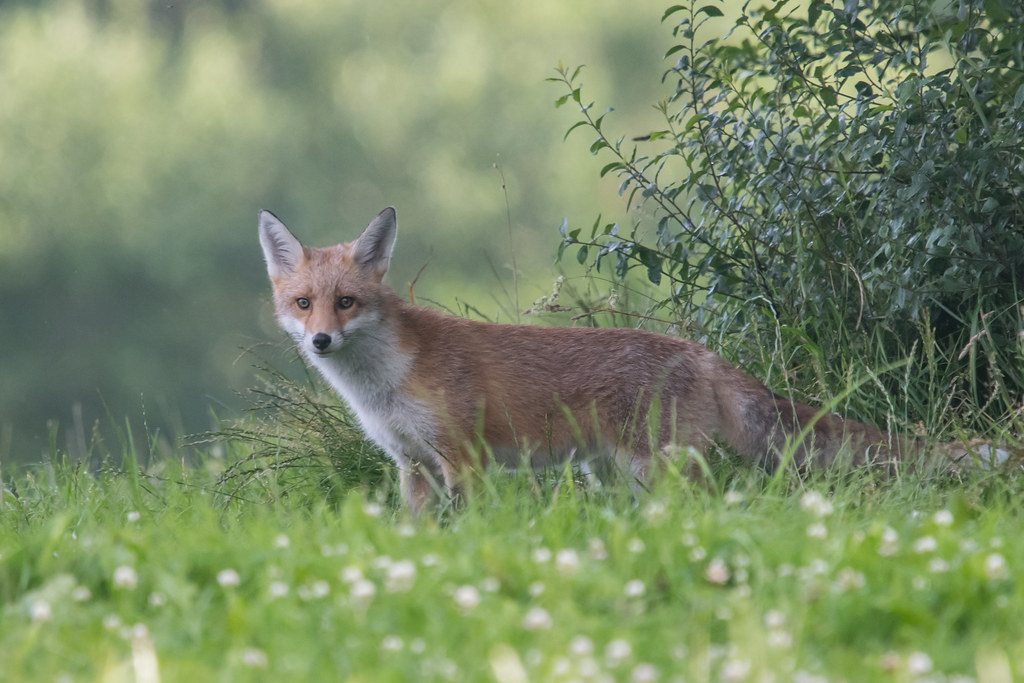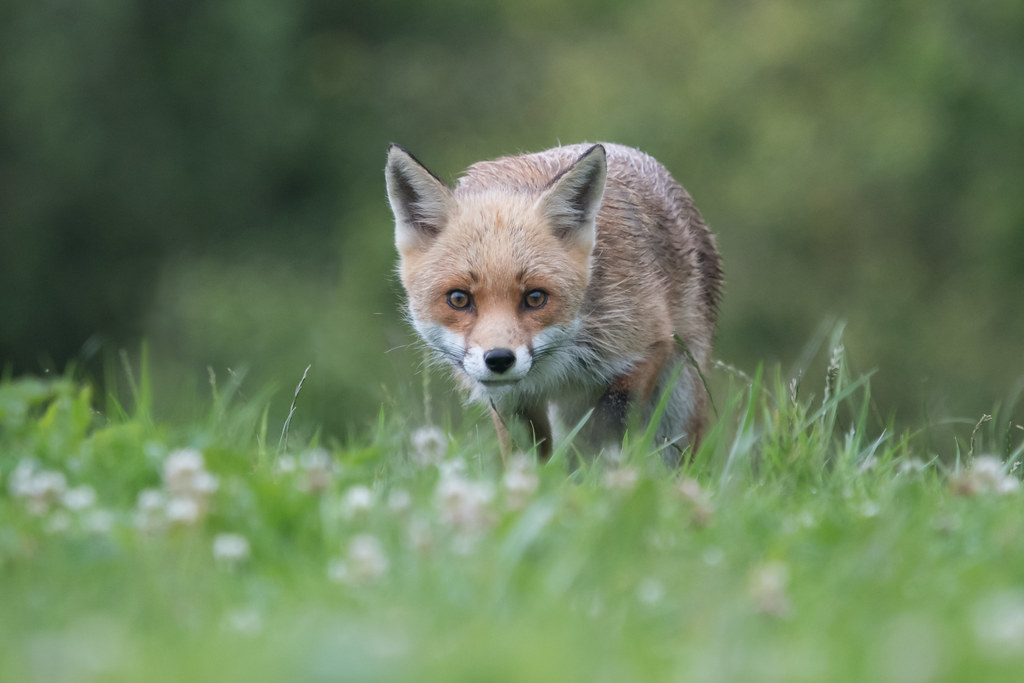
Tim writes: I see Foxes regularly on my garden trail cam but I have never managed a photograph in my garden as they are very shy, and strictly nocturnal. This nervousness is probably because of years of persecution in my rural Pennine area. But in urban areas there seem to be fewer people wishing them harm. Some people even feed them, which can make them come out during daylight and also can make them quite confiding. These photographs were from one such family of Foxes that I travelled to St Helens to try and photograph.

Foxes are found throughout Britain and Ireland. In fact they are found pretty much throughout the Northern Hemisphere. British Foxes were once thought to be a different subspecies (crucigera) with smaller, more widely separated teeth. But further work has shown that dentition varies and it is highly doubtful whether British Foxes are sufficiently different to merit being called a subspecies. They are highly adaptable and can occur in many different habitats feeding on a wide variety of food especially rabbits, voles, birds, beetles, worms and fruit. Foxes living in urban areas tend to scavenge for food scraps just as they do for carrion in rural areas. But they will also take live food in urban situations.
[registration_form]
Now I don’t see foxes everyday by any means and am usually very pleased when I do see one they are such beautiful animals. However as we keep free range chickens and the local foxes occasionally fancy a chicken dinner they are sometimes a little unwelcome. Especially as it means the chickens are kept in for a week or two. We don’t ring the local keeper or tell the hunt when we have a problem, after all the fox is only doing what it is designed to do and we should be as tolerant as possible about that.
Lovely photos Tim.
With avian flu the hens should be staying in more. Mine have enclosed outdoor runs for when they can’t roam. The enclosing mesh is sunk into the ground with a dose of subterranean concrete to help prevent excavations into the enclosure. Very occassionally a wild animal finds a chink in the perimeter. I once rescued a very frightened magpie fledgling. A couple of years after that I retrieved a dead grey squirrel.
About 3 years after the magpie rescue a many presented itself with its newly fledged offspring. I wondered whether that was the ‘rescued’ bird coming back to show me.
A many? A magpie. definitely a magpie.
Foxes are NOT found “throughout Britain and Ireland”. They are absent from Scilly Isles, Isle of Man, Channel Islands and all Scottish islands except Skye where they were introduced.
Andy – that’s a bit picky and depends what you mean by throughout. They aren’t found in my back garden either. Chill, chill!
I don’t think it’s picky because the statement is incorrect. The total land mass of the places where foxes are absent is considerable. The area of Northamptonshire is 2,364 km² and if I wrote that, say, Great Tits were found throughout Britain except for Northamptonshire you would have something to say about it! The land area of the largest 100 Scottish islands alone is over 10,000 km².
Andy – just so long as you don’t think it is picky.
Years ago I was told that there hadn’t been any on the Isle of Wight but they were introduced so that they could be hunted.
Does anyone know if this is true or another rural myth?
Thanks Gary. I am guessing this is a rural myth as the Handbook of British Mammals makes no reference to this, other than it is present on the Isle of Wight. It does mention that it was absent from Anglesey until 1962, and that it was purportedly introduced to the Isle of Man during the 1980s. Also, it says that during the late 19th century Foxes were introduced from Europe to reinforce local populations for hunting.
I then thought it might have been Isle of Man rather than Wight but Mrs Google showed me this.
https://www.iwfoxhounds.com/history.php
Hints at the importation of Spanish/ Portugese foxes ! as well as British ones.
They don’t record what the tenant farmers had to say about it.